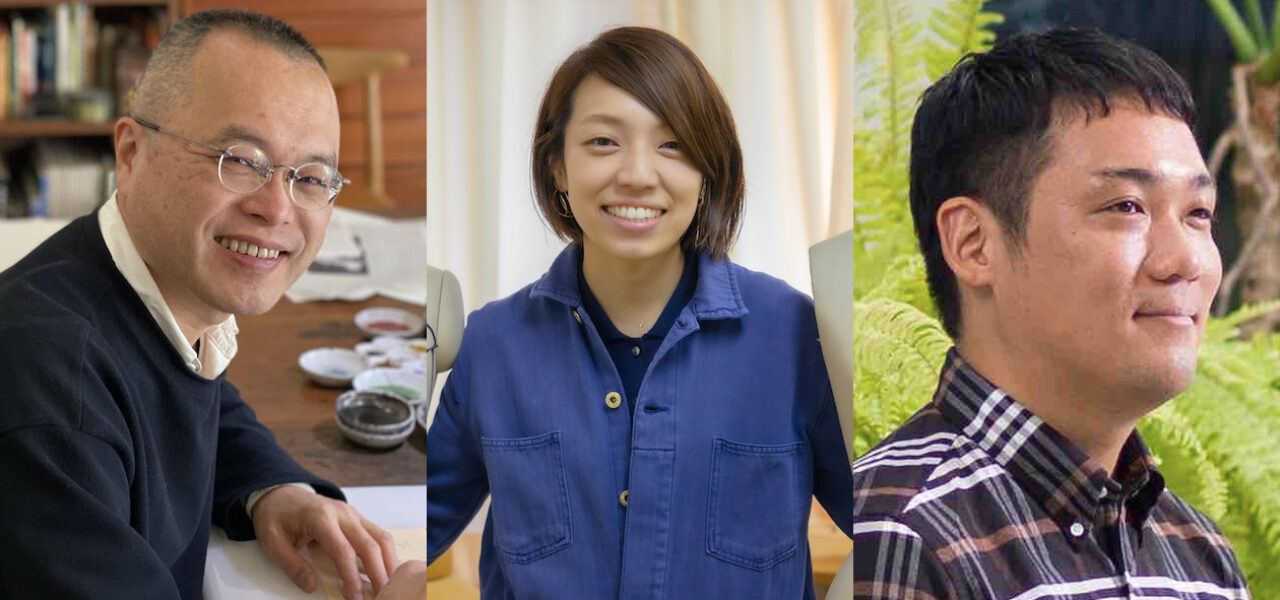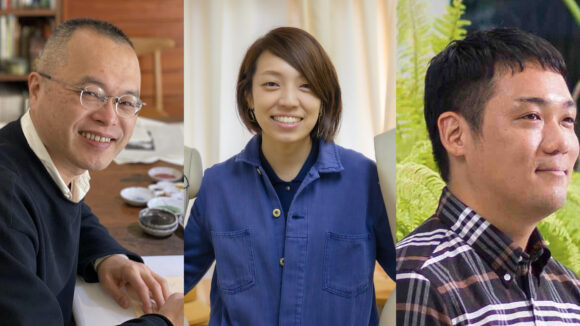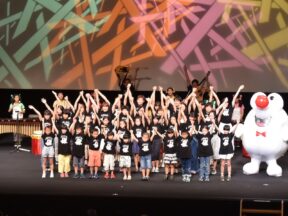

Exclusive: Hiroshima City Unveils Plans For New Animation Festival; Koji Yamamura Among Directors
Last fall, we reported that the Hiroshima International Animation Festival (HIAF), which the Japanese city had held in partnership with ASIFA for over 35 years, was ending in its current form. The local authorities had decided to replace it with a broader cultural festival which would include an animation section. The aim, they told us, would be “to contribute not only to promoting animation art, but also to revitalizing the economy, to promoting tourism, and more.”
We can now exclusively reveal more details about the new event. The Hiroshima Festival, which will hold its first edition in August 2022, will consist of a “music” and a “media geijutsu” section, the latter encompassing media arts, video games, manga, and animation. The animation strand will be known as Hiroshima Animation Season and will take place on August 17–21.
Hiroshima Animation Season will be led by three distinguished members of Japan’s independent animation community. The artistic directors will be Koji Yamamura, whose acclaimed shorts include the Oscar-nominated Mt. Head, and Shizuka Miyazaki, an animation artist based in Hiroshima.
Scholar, producer, and programmer Nobuaki Doi will oversee the operational side as the event’s producer. Doi founded and currently serves as director of the New Chitose International Animation Festival, which, along with HIAF, has been one of Japan’s most high-profile animation festivals in recent years.

Submissions to Hiroshima Animation Season will open at the end of 2021 or beginning of 2022. As things stand, the festival will be held every two years, as HIAF was. In the meantime, we spoke to the leadership to find out more about the new event, and how it will differ from HIAF …
Cartoon Brew: How will Hiroshima Animation Season relate to the broader Hiroshima Festival?
Nobuaki Doi: The name of Hiroshima is known worldwide for a sad reason that happened in 1945, but now the city wants to add another layer to its name by putting an emphasis on arts and culture. For a long time, the city hosted a first-class animation festival. It has a history. For this reason, the new festival should be one of the flagships for renewing Hiroshima.
Shizuka Miyazaki: Hiroshima is a very peaceful city. There is little turnover of people, which makes it stable and easy to live in, and people are very interested in sports, such as supporting the city’s baseball team.
On the other hand, from the perspective of art and culture, there is little stimulation and it is difficult to grow something complex. This has prevented the city from continuing to host various cultural events. That is why it is necessary for the city to intentionally create a mechanism to stimulate the citizens. I hope that through this festival, the traffic of people and culture will flourish, and Hiroshima will grow as a culturally mature city.
What is your vision for the new festival? How will it differ from the recently closed HIAF? Will anything stay the same?
Doi: Actually, the budget is rather small compared with HIAF, but the new festival does something new. It consists of three parts: Competition, Awards, and Academy.
In Competition, there will be two competitions. One is the Pan-Pacific and Asian Competition. As you know, the majority of animation festivals are located in Europe and European influence has been huge in this culture. The new festival teams think there should be something that focuses on our own area, like Animateka in Slovenia, whose competition focuses on Central and Eastern Europe to support local talent.
The other competition is the World Competition. It is open to everyone in the world but we have categories like Fiction, Documentary, Experimental, Family, and Special. In each category both short and feature films compete with each other.
We will have an award for Japanese animation: the Hiroshima Award. It is mainly for anime films and their staff (but not excluding independent films), with the aim of celebrating the achievements of the past two years. We hope this award will grow like the Emile Awards (in Europe) or Oscars (in the U.S.).
In the Academy, the festival will try to create an interaction between the animation field and citizens of Hiroshima. We will have the program H-AIR (Hiroshima Artist in Residence), which invites Japanese and international animation filmmakers to Hiroshima for half a year for their upcoming projects.
There was a residency program called A-AIR (Animation Artist in Residence) a long time ago in Tokyo. It was a pity the program was closed, as its achievement was tremendous. With H-AIR, the festival is trying to contribute to the future of the international animation scene just like A-AIR did.
We are also planning a strategy for connecting the art of animation with Hiroshima citizens. It will be an educational program about the use of animation. The details will be announced later this year.
Yamamura: What will not change is the love and passion for animation, and the desire to keep a place for its evolution as a form of artistic expression. There will be many changes to the details, including fixing the members of the selection committee for competitions to some extent. The artistic directors will be responsible for the final selections. [Note: at HIAF, the selection committee consisted of external guests, the members changing with each edition.]
This will give the festival a more curated individuality. In the World Competition, the films will be judged by the categories. This enables the jury to discuss them with more focus. Categories will also make it easier for the general audience to choose programs.
The city of Hiroshima says it wants the new festival to be “a more approachable event for ordinary citizens”, and to contribute toward “revitalizing the economy and promoting tourism.” How will this be reflected in the programming?
Doi: What lacked in the previous festival was communication, in my opinion. A certain number of Hiroshima citizens thought the festival had nothing to do with them. The new festival will appoint a “mediator,” whose role will be to connect the festival to the citizens.
They will promote the festival face to face to the potential audience in Hiroshima, and will have a close relationship with cultural events in the city. By setting up this role, we are following the examples of Berlinale, Clermont-Ferrand, and Fantasia, where not only professionals but also the general public enjoy the screenings.
To revitalize the economy and promote tourism, the new festival will be held all around Hiroshima. Most of the old festival was held inside the legendary Aster Plaza venue. We’ll still have some screenings there, but you’ll need to go outside and tour around the city. I know the weather in August is killingly hot, but Hiroshima is a very beautiful seaside city.
Miyazaki: In Hiroshima, there are many recreational spots such as rivers, mountains, and the sea just outside the city, as well as baseball fields, soccer fields, and many delicious restaurants. I hope that through the film festival, we can deepen our interaction with each other and have creative encounters.
Nobuaki, you are involved with the New Chitose Airport International Animation Festival. Will you continue to work with both festivals?
Doi: When I started the New Chitose Festival in 2014, HIAF was still influential and my intention was to go in different directions. I always thought Hiroshima was a rival that New Chitose should surpass someday. I still feel very weird to be involved in an animation festival held in Hiroshima, although officially there are no direct connections between the old and new ones.
New Chitose and Hiroshima City won’t stop me from holding posts at both festivals, but I deeply feel it is not fair to do so, because posts at animation festivals in Japan are very few. I know there are many talented young people who can do amazing work if they have a post. Nothing is confirmed yet, but I will consider how I work at New Chitose, because founding a new festival from scratch is very tough work. I feel I need to focus on it with all my might, especially when I want to make something very new that will go beyond what I had done at New Chitose.
Will the new festival be ASIFA-accredited? Will it be Oscar-qualifying?
Doi: It won’t be ASIFA-accredited just as New Chitose isn’t. I am not sure if the Oscars will keep qualifying status for the new festival, but I hope they will grant it in the near future.
I really respect [HIAF director] Sayoko Kinoshita and her team for continuing the festival for a long time, since the era when nobody was interested in international animation in Japan. The old festival did an amazing job promoting it and most independent animation professionals were influenced by it. It was the very first animation festival I attended. It showed us a way to understand the richness of the art of animation.
I really understand that to have an animation festival in Hiroshima means to feel the pressure of history. It bears a responsibility. By teaming up with Koji Yamamura and Shizuka Miyazaki, I really hope the new festival can do something great both for Hiroshima City and the animation professionals with a brand-new model of animation festival.
Miyazaki: I myself see the new festival as an update. However, for the citizens, I think it will be seen as a new event. That means there is a lot of room for penetration. As a citizen of Hiroshima and an animation artist, I hope the event will continue to enrich our lives by becoming an essential animation festival for the citizens and the world’s animation community.
Yamamura: I am a board member of ASIFA-Japan and a member of the Academy of Motion Picture Arts and Sciences. The relationship between ASIFA and the city of Hiroshima is still very distant, so I think approval from ASIFA will be difficult for the time being. As for the Oscars, I would like to actively approach them as a member of the Academy. As a first step, I would like to reset the history of the past festival and bring a new wind to Hiroshima by making an event that can present the contemporary situation of animation.

.png)
